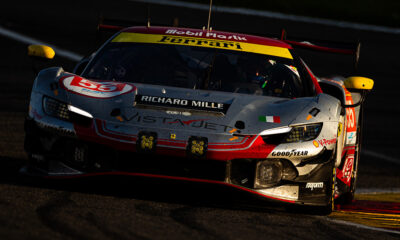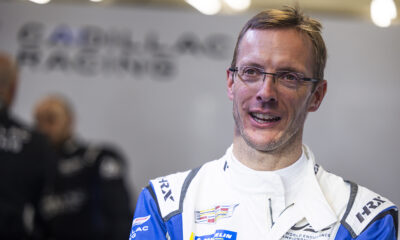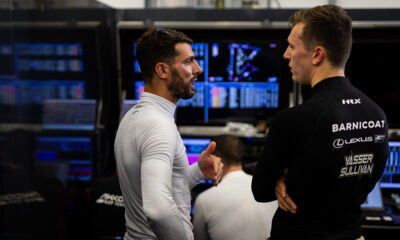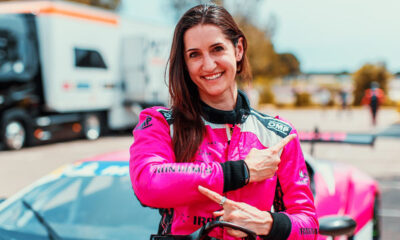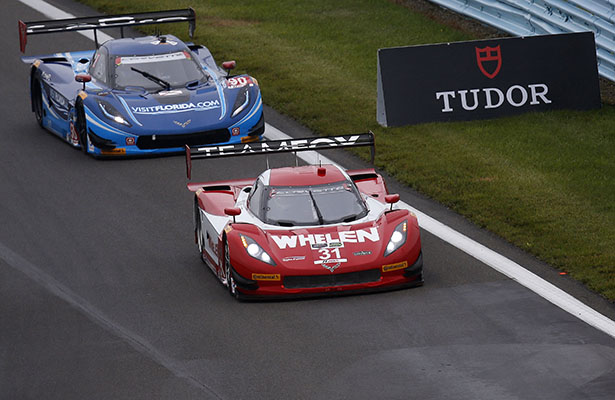
Photo: IMSA
While a new era of North American prototype racing is set to launch in 2017 with the debut of all-new machinery, next year’s TUDOR United SportsCar Championship season could see full-season entry numbers dip even further below the already low car count that the class currently faces.
For teams, who will be competing in the expected final year of DP machinery, alongside current-generation P2 cars, the short-term future of the championship’s flagship class raises some alarm bells.
“I’m absolutely concerned about it. It’s a lame duck year. There’s nothing we can do about it,” Michael Shank Racing team owner Mike Shank told Sportscar365.
The TUDOR Championship launched at last year’s Rolex 24 at Daytona with a 18-car P class field, before thinning out to a dozen full-season entries for the majority of the season.
However, with withdrawals from Tequila Patron ESM and OAK Racing, and no new full-season teams to the grid, the P class has been faced eight to nine-car class fields this year.
The number could be further reduced in 2016, with Chip Ganassi Racing shifting its focus to the new Ford GT factory program in GT Le Mans, and its Riley-Ford DP not currently confirmed.
And with cars not expecting to be grandfathered into the P class in 2017, teams are unlikely to invest in machinery for only a single year.
“There is a concern. However, 2016 is still going to be a racing season,” Wayne Taylor told Sportscar365. “It’s going to be the last year of these cars. Who knows, people may come out to do the last year.
“What’s amazing is how still pretty amazing how competitive it is, even with a low car count. It’s still very, very competitive.
“Of course I’d like to see more cars. I think ten cars would be good. Seven to eight is OK. You’ll still have the extra cars at Daytona and Sebring.”
For longtime DP entrant Shank, who transitioned to the new Ligier JS P2 Honda for this year, he no doubt feels it’s the right time to move onto the new-generation of prototypes, despite what could result in a compromised grid next year.
“I feel two different ways about it,” he said. “On one hand, having come from DP and having got my boots wet in that, I understand that we need to get a move on it and need to go to a [P2 style car]. It’s going to have to happen at some point.
“So you’ve gotta cut break. Next year, we may potentially suffer for a bit because of that. But if people can just drive one of the [P2 cars], and see what they do, they’d be convinced we need to go that way for sure.”
Shank, who is targeting to enter a second Ligier-Honda in the Tequila Patron North American Endurance Cup next year, counts as one of the potential additions to the grid, albeit it a partial-season effort.
IMSA President Scott Atherton said the sanctioning body is not concerned about the car count situation for next year.
“We’ve come to recognize that we’re in a transitional year,” Atherton told Sportscar365. “We’ve adjusted our expectations accordingly. I think there’s a couple of examples right now that could potentially be part of our grid next year.
“ESM making a commitment to run more races — and I’m not announcing anything — that’s the potential. Tracy Krohn doing the same. We’ve seen some recent news of some existing Prototype teams that are aggressively looking to add a car next year.
“Our eyes are focused on 2017. We haven’t in any way suggested that 2016 doesn’t matter but we’re keeping it all in perspective.”
Atherton also noted the competitive nature of the class, which has seen five different winners in six races this season.
“Some of the best racing we’ve ever had was when we had relatively lower car counts compared to bigger numbers,” he said. “The quality of the racing, I think, is as important, if not more so, than the quantity.
“The caliber of teams racing across our whole paddock, but in particular the Prototype and GTLM categories is at a very high level.
“For that reason we’re not concerned because I think that will continue next year, regardless.”




















